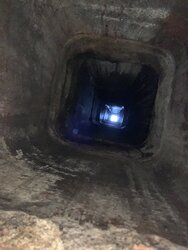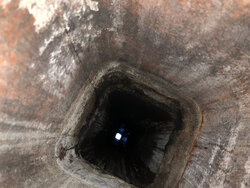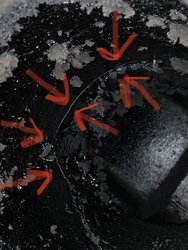I made a prior post where I felt pretty proud of my self for having a seemingly super clean chimney after 2.5-3 cords. Well yesterday we were burning and the smoke detector in the house started to go off and we had that chemically creosote smell in the house. So I let the fire die out and the stove cool down and this morning I popped the flue pipe off for a look and found quite a bit of build up.
I also found a concerning crack. what do you guys think of this? Just go for a standard cleaning? Or more going on?
The chimney is an exterior masonry chimney, the first picture is the inlet to the chimney from inside my house.
The other two pictures are from either end of my removed single wall glue pipe. You can see major buildup in the 90 degree bend
What should I do about this?
This is the crack (read arrow)
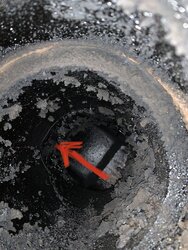
looking into the flue pipe from the side that plugs into the stove.
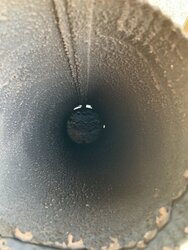
looking into the flue pipe from the side that plugs into the wall (90 degree bend)
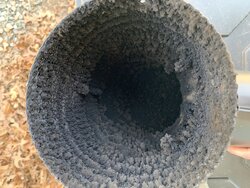
Looking into the connector from inside my house
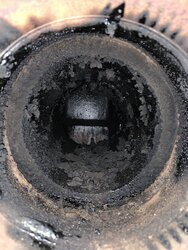
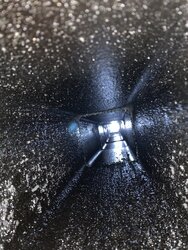
I also found a concerning crack. what do you guys think of this? Just go for a standard cleaning? Or more going on?
The chimney is an exterior masonry chimney, the first picture is the inlet to the chimney from inside my house.
The other two pictures are from either end of my removed single wall glue pipe. You can see major buildup in the 90 degree bend
What should I do about this?
This is the crack (read arrow)

looking into the flue pipe from the side that plugs into the stove.

looking into the flue pipe from the side that plugs into the wall (90 degree bend)

Looking into the connector from inside my house


Last edited:


